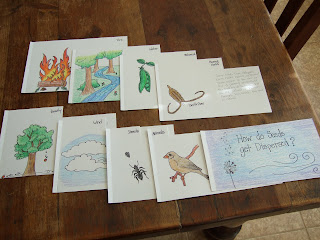
My class is book buddies with a kinder class. The kinder class enjoys a whole unit with The Polar Express, and since it happens to be one of my favorite picture books too, I've figured out ways to make it work for my 4th graders. Although it changes every year (often based on how long it took us to finish The Best Christmas Pageant Ever), I love using The Polar Express as a prompt for working with figurative language, persuasive letter writing, and sequencing. I also adore bringing the story to life and working it into other subjects, such as math.
The ticket you see in the photo is given to my students at the beginning of our fun. I print them on gold vellum paper (from Hobby Lobby or Michael’s). After cutting them apart, I use a circle punch to notch the ends so it will look like a ticket. Because vellum doesn’t absorb the ink, unless you are using a laser printer, I suggest having the tickets laminated. Otherwise, the students’ fingers will smudge the printing. I feel it is worth the effort, as the gold vellum has a sheen and translucence that the kids see as special—far more so than regular paper printed with a golden yellow ink. I’ve shared the link for my tickets below. The ticket number is actually the date on which the ticket was given, helping to make it a keepsake.
http://www.4shared.com/file/_dAA2ZFU/polar_express_ticket.html
The link below is a division worksheet I created to try and bring a bit of fun into our math.
http://www.4shared.com/office/7LfKMlsQ/polar_express_division.html
I sure hope those links work. This is my first time trying to share files! Please let me know if they don’t work. :)










































